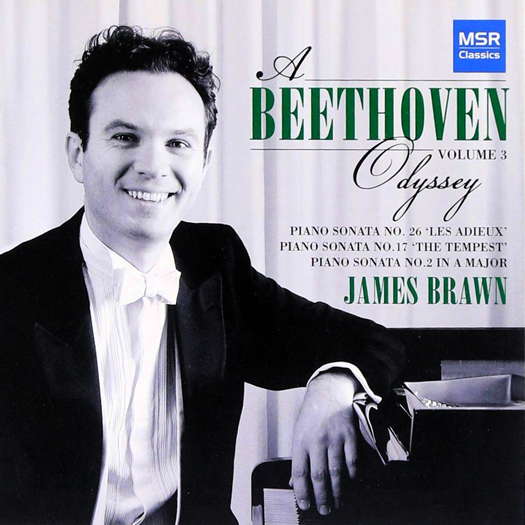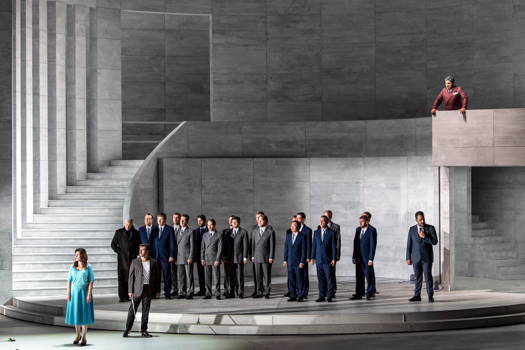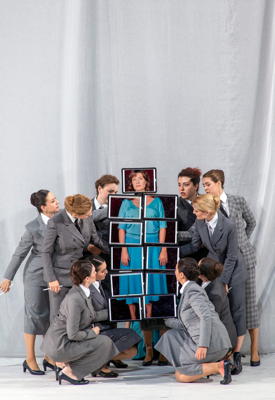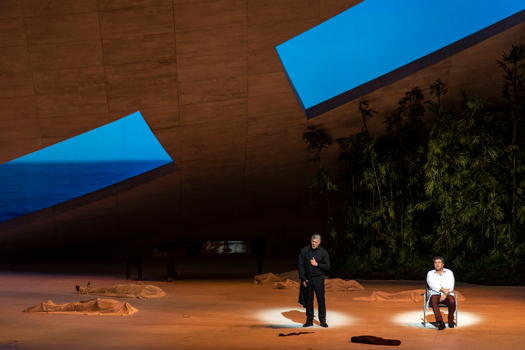- Frédéric Chopin
- Julius Stockhausen
- Mario Bernardi
- Leonard Salzedo
- Bacewicz: Concerto for Large Symphony Orchestra
- Carol Ann Duffy
- Would You Listen to Ayla?
- St Luke in the Fields
 DISCUSSION: What is a work? John Dante Prevedini leads a discussion about The performing artist as co-creator, including contributions from Halida Dinova, Yekaterina Lebedeva, Béla Hartmann, David Arditti and Stephen Francis Vasta.
DISCUSSION: What is a work? John Dante Prevedini leads a discussion about The performing artist as co-creator, including contributions from Halida Dinova, Yekaterina Lebedeva, Béla Hartmann, David Arditti and Stephen Francis Vasta.
 SPONSORED: CD Spotlight. Masterful Handling - Volume 3 of James Brawn's Beethoven, praised by Andrew Schartmann.
SPONSORED: CD Spotlight. Masterful Handling - Volume 3 of James Brawn's Beethoven, praised by Andrew Schartmann.
All sponsored features >>
An Engrossing 'Simon'
GIUSEPPE PENNISI reports on
one of Verdi's 'cursed' operas
at the Salzburg Festival
I do not know if Giuseppe Verdi's Simon Boccanegra has ever been previously staged at the Salzburg Festival. I think the production presented this year is the first at the Austrian event, also because the work's success is relatively recent. Simon Boccanegra was, for decades, one of the worst of the so called 'cursed' operas by Verdi. It was a thud at the premiere in La Fenice in 1857; remodeled in the libretto and music, it had modest results when presented in Reggio Emilia, Milan, Naples and Florence in 1858-59. Rethought with the help of Arrigo Boito, who put hand to essential parts of the libretto, the opera was a short term hit when the current version reached La Scala in 1881. In the last part of the nineteenth century and the first half of the twentieth century, it was nearly forgotten.
Composer and conductor Gino Marinuzzi, aware that the opera was a unique work of art amongst Verdi's operas, attempted to relaunch it in Rome in 1934. Since then, Boccanegra has taken a slow journey leading to real international appreciation at the beginning of the 1970s thanks to two excellent productions. The first was conducted by Gianandrea Gavazzani at La Scala: tragic, gloomy, almost hellish (and listenable on a wonderful RCA CD). The second, also at La Scala, conducted by Claudio Abbado, was, instead, sweet, full of bright colors and light volumes. (The evocations of the marine atmosphere were unbeatable.) In a production by Strehler and Frigerio, it has traveled the world (including London, Paris, Moscow, Washington and Vienna) and is available on CD and DVD.
The 'curse' of Boccanegra is attributable to a very tangled libretto and to a two-faced score. On the one hand, the score points to the past; on the other, it is launched towards the future - think of the use of bassoons and bass clarinet, inconceivable without the Wagnerian experience. Trimmed from all nineteenth century trappings, Boccanegra's plot is a suffered apologue about politics and human relationships, mainly within the family. The inner story has little to do with the history of Simon Boccanegra who was, in fact, the first Doge of Genoa as fictionalized in brilliant colors, following the custom of popular literature of the time.
The 'corsair' Simone, man of the sea (where he expels the Saracens who aim to land on the Tyrrhenian coast), is forced to enter politics in the hope of being able to marry the woman he loves, She is of patrician lineage. Thus, he becomes the Doge, but his woman dies and their daughter is kidnapped. For a quarter of a century, Simon Boccanegra exercises his power, becoming increasingly alone, and further and further away from the sea. He has a 'high' political vision but is caught in the traps of 'low politics' consisting of nepotism, favors, intrigue and low blows. When he finds his daughter and when he discovers paternal affection for the young man to whom she is in love, it is too late: the game of power crushes him, while he stares at his sea.
I saw and heard the Salzburg production on 20 August 2019. Andreas Kriegenburg's stage direction and Julia Weinrich's dramaturgy prune from the drama all references to fourteenth century Genoa. They accentuate the two underlying themes of Verdi's poetics, in Simon Boccanegra as well as also in several other works: on the one hand, contempt for the 'low politics' of intrigue and power games, and on the other, great attention to human relations. The action takes place nowadays in a modern structure: from the large windows, you can see the sea.

Marina Rebeka as Amelia Grimaldi, Charles Castronovo as Gabriele Adorno, René Pape as Jacopo Fiesco, Antonio Di Matteo as Pietro and members of the ensemble in Verdi's Simon Boccanegra at the Salzburg Festival. Photo © 2019 Ruth Walz
The structure becomes the Grand Council Hall of the second part of Act I. The sets are by Harald Thor and the videos by Peter Venus. The costumes by Tanja Hofmann are in black or dark grey with the exception of the blue robe of Amelia, a reference to the sea. This setting intends to give a universal message.

A scene from Verdi's Simon Boccanegra at the Salzburg Festival. Photo © 2019 Ruth Walz
Valery Gergiev conducted the Wiener Philarmoniker: a fascinating rendering. He slightly increases the tempi when the action is more intense, and decreases them when it is more meditative. Gergiev accentuates the cellos, double basses and bassoons in the darkest moments, while underlining the violins in recalling the sweetness of marine air. The vocal cast is deluxe. In a drama almost entirely among men, Marina Rebeka is the gentle female character from her initial aria 'Come in quest'aura bruna'. Her Gabriele Adorno is a magnificent Charles Castronovo who received a round of open stage applause at the end of 'Cielo pietoso rendimela'. The deuteragonists are Luca Salsi in the title role (great in 'Fratricidi ... Plebe, Patrizi, Popolo') and René Pape (whose 'Il lacerato spirto' was really moving) as Jacopo Fiesco.

René Pape as Jacopo Fiesco and Luca Salsi in the title role of Verdi's Simon Boccanegra at the Salzburg Festival. Photo © 2019 Ruth Walz
Paolo Albiani was interpreted effectively by André Heyboer.
There were cheers and applause for this unforgettable production of Simon Boccanegra.
Copyright © 29 August 2019
Giuseppe Pennisi,
Rome, Italy



